Weifu Li
TSGaussian: Semantic and Depth-Guided Target-Specific Gaussian Splatting from Sparse Views
Dec 13, 2024



Abstract:Recent advances in Gaussian Splatting have significantly advanced the field, achieving both panoptic and interactive segmentation of 3D scenes. However, existing methodologies often overlook the critical need for reconstructing specified targets with complex structures from sparse views. To address this issue, we introduce TSGaussian, a novel framework that combines semantic constraints with depth priors to avoid geometry degradation in challenging novel view synthesis tasks. Our approach prioritizes computational resources on designated targets while minimizing background allocation. Bounding boxes from YOLOv9 serve as prompts for Segment Anything Model to generate 2D mask predictions, ensuring semantic accuracy and cost efficiency. TSGaussian effectively clusters 3D gaussians by introducing a compact identity encoding for each Gaussian ellipsoid and incorporating 3D spatial consistency regularization. Leveraging these modules, we propose a pruning strategy to effectively reduce redundancy in 3D gaussians. Extensive experiments demonstrate that TSGaussian outperforms state-of-the-art methods on three standard datasets and a new challenging dataset we collected, achieving superior results in novel view synthesis of specific objects. Code is available at: https://github.com/leon2000-ai/TSGaussian.
Stability-based Generalization Analysis for Mixtures of Pointwise and Pairwise Learning
Feb 20, 2023
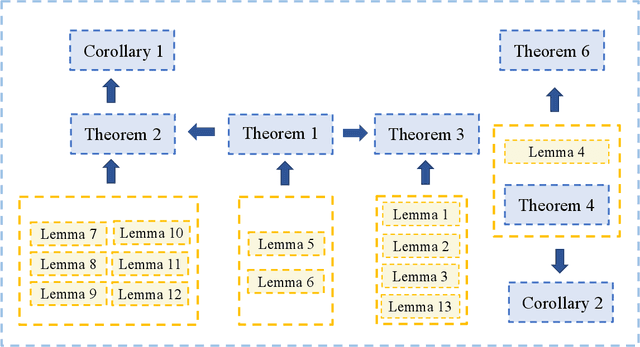
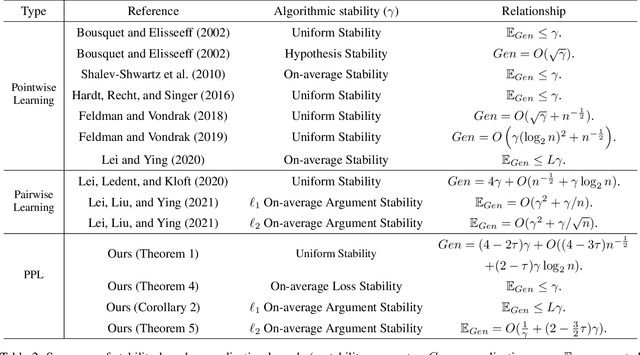
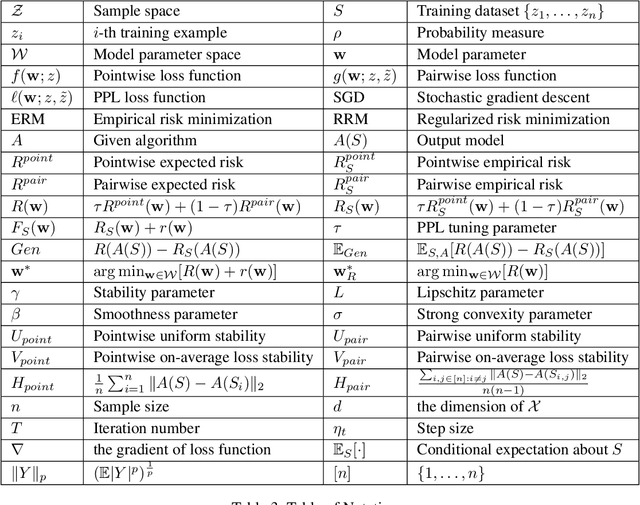
Abstract:Recently, some mixture algorithms of pointwise and pairwise learning (PPL) have been formulated by employing the hybrid error metric of "pointwise loss + pairwise loss" and have shown empirical effectiveness on feature selection, ranking and recommendation tasks. However, to the best of our knowledge, the learning theory foundation of PPL has not been touched in the existing works. In this paper, we try to fill this theoretical gap by investigating the generalization properties of PPL. After extending the definitions of algorithmic stability to the PPL setting, we establish the high-probability generalization bounds for uniformly stable PPL algorithms. Moreover, explicit convergence rates of stochastic gradient descent (SGD) and regularized risk minimization (RRM) for PPL are stated by developing the stability analysis technique of pairwise learning. In addition, the refined generalization bounds of PPL are obtained by replacing uniform stability with on-average stability.
On the Stability and Generalization of Triplet Learning
Feb 20, 2023Abstract:Triplet learning, i.e. learning from triplet data, has attracted much attention in computer vision tasks with an extremely large number of categories, e.g., face recognition and person re-identification. Albeit with rapid progress in designing and applying triplet learning algorithms, there is a lacking study on the theoretical understanding of their generalization performance. To fill this gap, this paper investigates the generalization guarantees of triplet learning by leveraging the stability analysis. Specifically, we establish the first general high-probability generalization bound for the triplet learning algorithm satisfying the uniform stability, and then obtain the excess risk bounds of the order $O(n^{-\frac{1}{2}} \mathrm{log}n)$ for both stochastic gradient descent (SGD) and regularized risk minimization (RRM), where $2n$ is approximately equal to the number of training samples. Moreover, an optimistic generalization bound in expectation as fast as $O(n^{-1})$ is derived for RRM in a low noise case via the on-average stability analysis. Finally, our results are applied to triplet metric learning to characterize its theoretical underpinning.
Error-based Knockoffs Inference for Controlled Feature Selection
Mar 09, 2022



Abstract:Recently, the scheme of model-X knockoffs was proposed as a promising solution to address controlled feature selection under high-dimensional finite-sample settings. However, the procedure of model-X knockoffs depends heavily on the coefficient-based feature importance and only concerns the control of false discovery rate (FDR). To further improve its adaptivity and flexibility, in this paper, we propose an error-based knockoff inference method by integrating the knockoff features, the error-based feature importance statistics, and the stepdown procedure together. The proposed inference procedure does not require specifying a regression model and can handle feature selection with theoretical guarantees on controlling false discovery proportion (FDP), FDR, or k-familywise error rate (k-FWER). Empirical evaluations demonstrate the competitive performance of our approach on both simulated and real data.
Principal Model Analysis Based on Partial Least Squares
Feb 06, 2019
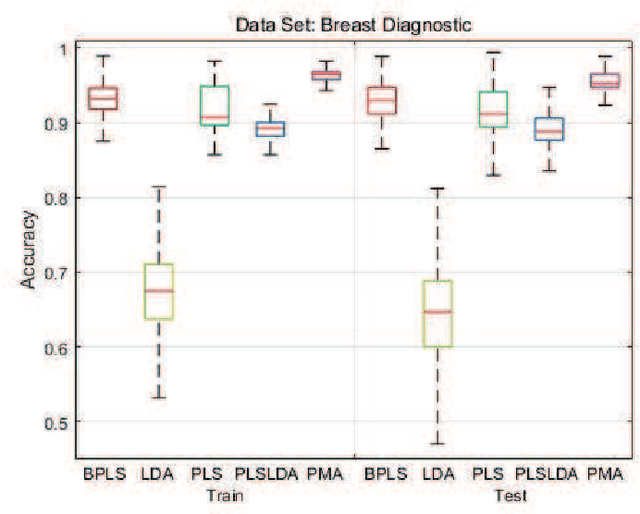

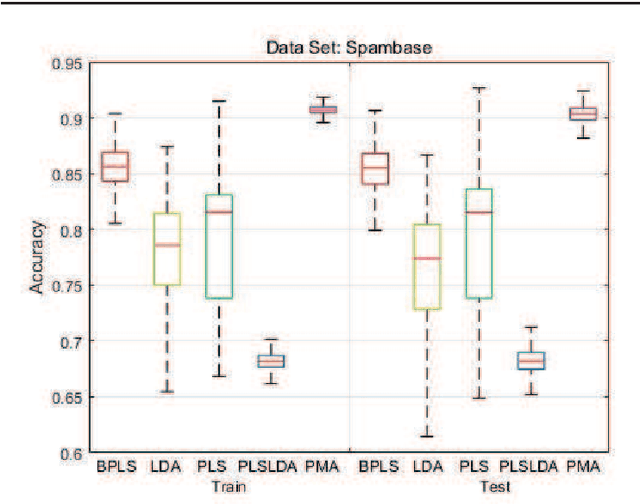
Abstract:Motivated by the Bagging Partial Least Squares (PLS) and Principal Component Analysis (PCA) algorithms, we propose a Principal Model Analysis (PMA) method in this paper. In the proposed PMA algorithm, the PCA and the PLS are combined. In the method, multiple PLS models are trained on sub-training sets, derived from the original training set based on the random sampling with replacement method. The regression coefficients of all the sub-PLS models are fused in a joint regression coefficient matrix. The final projection direction is then estimated by performing the PCA on the joint regression coefficient matrix. The proposed PMA method is compared with other traditional dimension reduction methods, such as PLS, Bagging PLS, Linear discriminant analysis (LDA) and PLS-LDA. Experimental results on six public datasets show that our proposed method can achieve better classification performance and is usually more stable.
 Add to Chrome
Add to Chrome Add to Firefox
Add to Firefox Add to Edge
Add to Edge